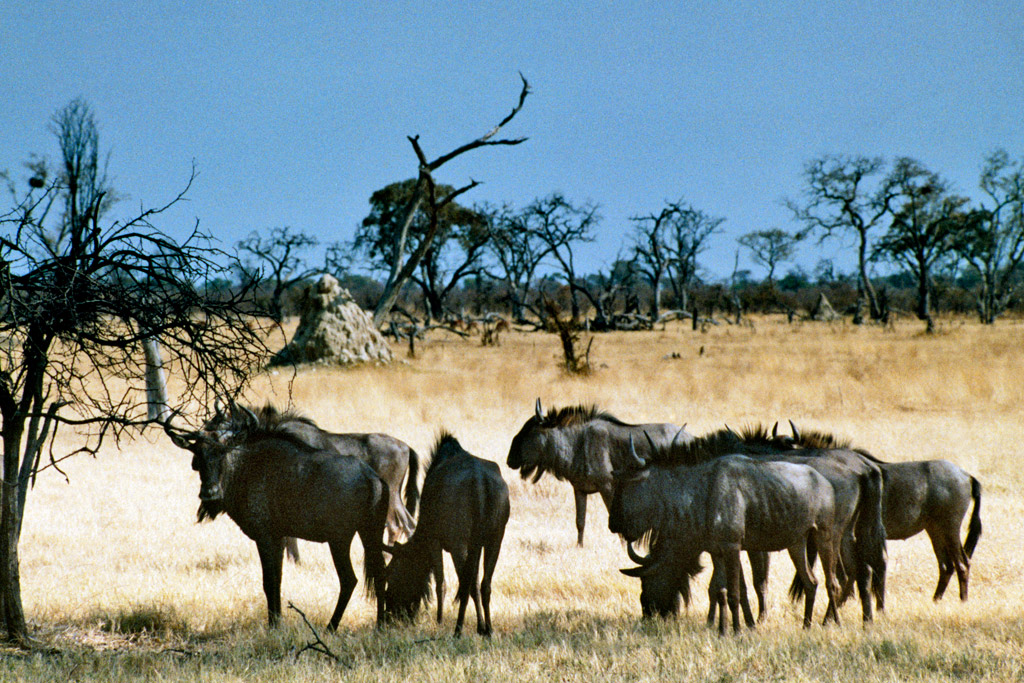November 15, 2024 20:05 (IST)

UN adopts new global platform to tackle wildlife
New York, May 22 (IBNS): In response to the rising levels of illicit trafficking of fauna and flora, the United Nations Office on Drugs and Crime (UNODC) has adopted a new global platform taking aim at this "particularly devastating" form of organized crime involving a raft of illegal activities - from poaching to timber smuggling and money laundering.
The Global Programme for Combatting Wildlife and Forest Crime will be implemented over the next four years and is an important step towards building Government capacity to prevent and combat such crime on a regional, national and local basis. It will also raise awareness to contribute to the reduction of demand for wild fauna and flora.
“The emergence of this Global Programme shows just how much this critical issue has come to the fore in recent years,” commented UNODC Executive Director Yury Fedotov, who emphasized that the initiative highlights a serious and growing problem and one which UNODC is in a unique position to help fight.
The adoption of the Global Programme follows the 23rd Commission on Crime Prevention and Criminal Justice which concluded last week in Vienna. During its meeting, the Commission called for more work to be done on tackling environmental crime, and introduced a draft resolution aimed at strengthening targeted crime prevention and criminal justice responses to combat illicit trafficking in forest products.
The development of the Global Programme comes amid increasing recognition that responding to the threat posed to wildlife and forests is no longer purely a conservation issue. With a growing understanding that organized crime is a key factor driving the unprecedented growth of this cruel and illicit trade, the need to tackle it from this angle is ever more urgent.
In this regard, and drawing on UNODC’s ability to assist with law enforcement and criminal justice concerns, the Global Programme will support a number of areas such as building legislation to address this crime, strengthening investigative, prosecutorial and judicial capacities, and combating related issues of money-laundering and corruption. It will also support Member States in their efforts to introduce livelihoods to affected communities.
“By working in a coordinated, global manner that allows us to complement existing initiatives by our partners, I am confident that we can help contribute to real change at both the supply and demand side” said Fedotov.
UNODC says that wildlife and forest crime present a particularly devastating form of organized crime. The number of tigers in the world, for example, has plummeted from about 100,000 a century ago to approximately 3,000 on Wednesday, and they continue to fall with an average 110 tigers killed every year.
Further, the rhino population is under threat with three of the five living rhino species listed as “critically endangered” on the International Union for Conservation of Nature (IUCN) “Red List.” In South Africa, home to 90 per cent of Africa’s rhino population, 1,004 rhinos were killed in 2013 – a devastating climb from 2003 when 22 rhinos were killed. Meanwhile across Africa it is estimated that over 20,000 elephants are poached annually for their ivory.
There are also strong links to other forms of crime. Says UNODC. Fraud, money laundering and corruption are all frequently associated with this crime, and the existing modus operandi and routes used for the trafficking of drugs, people and firearms are employed by traffickers of fauna and flora.
It is also a major funding source: in East Asia and the Pacific alone – a region particularly vulnerable to timber trafficking – criminal groups make around USD 23 billion annually from wildlife and forest crimes. This constitutes a large part of the USD 90 billion a year that is generated from transnational organized crime in the region collectively, according to UNODC.
(Wildlife. UN Photo/E Darroch)
Support Our Journalism
We cannot do without you.. your contribution supports unbiased journalism
IBNS is not driven by any ism- not wokeism, not racism, not skewed secularism, not hyper right-wing or left liberal ideals, nor by any hardline religious beliefs or hyper nationalism. We want to serve you good old objective news, as they are. We do not judge or preach. We let people decide for themselves. We only try to present factual and well-sourced news.
Support objective journalism for a small contribution.
Latest Headlines
More than 260 million people in USA will be either obese or overweight by 2050: Study Fri, Nov 15 2024
WHO-released study shows global diabetes epidemic reaches critical levels with 800 million cases Fri, Nov 15 2024
ISI Kolkata's Prof Neena Gupta wins Infosys Prize 2024 for her exemplary work in the field of Mathematical Sciences Fri, Nov 15 2024
Delhi air pollution: GRAP-3 curbs start tomorrow; construction works banned, primary schools shift to online mode Thu, Nov 14 2024
Study shows total number of adults living with either type 1 or type 2 diabetes in the world has surpassed 800 million Thu, Nov 14 2024
Adolescents across Europe, Central Asia and Canada face rising school pressure, diminishing family support, says WHO Thu, Nov 14 2024
My body has changed but I weigh same: Sunita Williams on health rumours after 150 days in space Thu, Nov 14 2024
Science and Technology Minister Dr Jitendra Singh inaugurates centenary celebrations of iconic 'Bose-Einstein' Statistics Thu, Nov 14 2024
WMO alerts 2024 is on track to be the hottest year on record Tue, Nov 12 2024
The last feral horses of India Mon, Nov 11 2024







